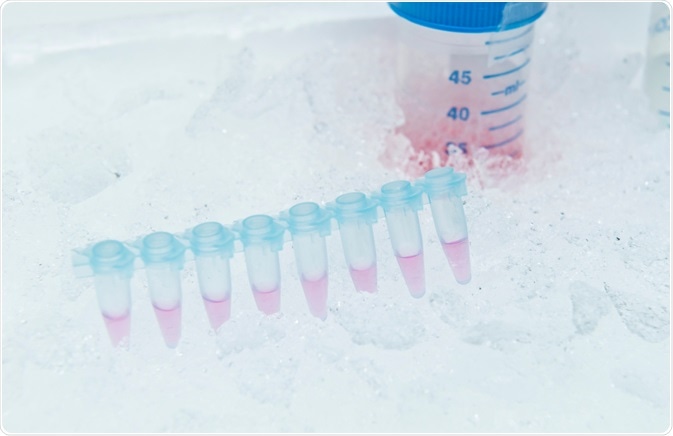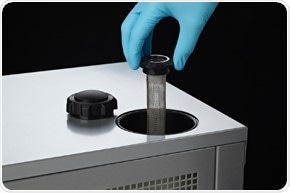
Temperature Control and Heat Exchange in Bioreactors
Biological reactions are very sensitive to changes in environmental factors. For this reason, bioreactors must have excellent temperature control and heat exchange capabilities. PolyScience are market leaders in temperature control technology for bioreactors and provide solutions for a range of bioreactors. This article outlines why high-quality temperature controllers are essential for bioreactors and describes some of the recent applications of PolyScience temperature control solutions.

© unoL/Shutterstock.com
As early as the first world war, biological reactions were used to produce commodity chemicals including acetone, butanol, and ethanol. However, the rise of the petrochemical industry in the 1950s shifted the focus of the chemical industry from biological reactions to conventional chemical processes.
In recent years, fears regarding the limited availability of fossil fuels has driven a return to bioprocesses and biotechnology. Bioprocesses are widely researched and are already used in industry to produce pharmaceuticals, biochemicals, food ingredients, and biofuels.
Biological reactions need careful environmental control
Industrial processes that use living cells or enzymes are typically conducted in bioreactors, which are specifically designed to support biologically active environments. As the ideal conditions of each biological reaction vary according to the demands of individual cells and enzymes used, the environmental conditions inside the bioreactor, including gas flow rates, temperature, pH, dissolved oxygen levels and agitation rate, must be carefully optimized, closely monitored, and precisely controlled.
Reliable temperature control is vital for bioreactors
Biological processes offer several advantages over traditional chemical processes including increased specificity, increased energy efficiency, and reduced environmental impact. However, bioprocesses are very sensitive to changes in environmental conditions, such as temperature. Each biological reaction has a specific optimum temperature. Temperature changes of less than 5°C can significantly affect the rate of biological reactions and even denature enzymes, rendering them permanently damaged.
Variations in temperature in bioreactors can be used to initiate different reaction steps. Maintaining the correct temperature for each step, combined with efficient heating or cooling for the next step, can be crucial for obtaining the desired reaction product. Temperature control is, therefore, a vital factor in biological processes and reactions.
Temperature control can affect reaction stability
Researchers from Washington University have investigated the effects of temperature on biological reactors. The researchers compared mesophilic (37°C) and thermophilic (55°C) anaerobic digestion of secondary residues from brewery wastewater digestion. They found that the two processes provided similar overall performance, but the thermophilic reactor was more unstable due to increased free ammonia concentrations. This study demonstrates that good temperature control is vital for reaction control, not only due to the risk of denaturing enzymes or damaging cells but also because non-optimal temperatures can result in the production of reaction inhibitors which can reduce reaction efficiency and create an unstable reaction process.
Efficient heat exchange enables reliable temperature cycling in bioreactors
The polymerase chain reaction (PCR) is widely used in research and clinical laboratories to amplify or copy DNA sequences. The reaction uses a thermally stable DNA polymerase combined with thermal cycling to initiate each reaction step in the PCR process. Within a two-minute cycle, the reaction temperature changes from 94–98°C for DNA denaturation, to 50–65°C for primer annealing, and finally to 70–80°C for DNA extension.
In practice, PCR can fail for many reasons, but accurate temperature control at each step, combined with efficient heat exchange to enable rapid cycling, is particularly important for obtaining accurate copies of the desired DNA sequence. For example, during the annealing step the temperature must be low enough for primers to bind to the denatured DNA strands, but high enough to ensure that the binding is specific and not random.
Hybrid bioreactors may require different temperature zones within one reactor
Recent innovations using more complex, hybrid bioreactors that combine several processes demand specific temperature control and excellent heat exchange. For example, recent publications by scientists in Singapore report a hybrid reactor incorporating membrane distillation in a bioreactor to treat wastewater from the petrochemical industry.
The process uses an activated sludge process, where aerobic microorganisms digest organic matter, combined with membrane distillation to produce high-purity water. The digestion process is conducted using thermophilic bacteria and so requires a temperature of 45–80°C. However, a temperature difference must be maintained across the distillation membrane to ensure efficient membrane distillation, so the researchers strictly maintained the liquor side of the membrane at 56-58°C, while the product side of the membrane was maintained at 30°C.
PolyScience provide a range of precise temperature control solutions for bioreactors
In the studies described above, the researchers used temperature control solutions from PolyScience to precisely control the temperatures of their bioreactors and ensure maximum efficiency. The 6000 series chillers from PolyScience are portable, low maintenance instruments that can be easily incorporated into your lab. They provide a reliable cooling solution and temperature control essential for biological reactions.
In addition, the PolyScience 6000 series chillers can not only cool but also provide a heating option which has the ability to heat up to 70°C, making them ideal for reactions that may require a range of different temperatures.
References and further reading
- ‘Bioprocessing for Value-Added Products from Renewable Resources’ —Yang ST, Elsevier Science, 2007
- ‘The Biotechnology Revolution: The Science and Applications’ In: ‘Verification of the Biological and Toxin Weapons Convention’ — Dando MR, Pearson GS, Toth T, Springer, 2000.
- ‘Basic and Applied Aspects of Biotechnology’ —Gupta V, Sengupta M, Prakash J, Tripathy BC, Springer, 2016
- ‘Anaerobic digestion of secondary residuals from an anaerobic bioreactor at a brewery to enhance bioenergy generation’ — Bocher BT, Agler MT, Garcia ML, Beers AR, Angenent LT, Journal of Industrial Microbiology & Biotechnology, 2008.
- ‘Experimental Study and Design of a Submerged Membrane Distillation Bioreactor’ —Phattaranawik J, Fane AG, Pasquier ACS, Bing W, Wong FS, Chemical Engineering & Technology, 2009.
- ‘Feasibility study on petrochemical wastewater treatment and reuse using a novel submerged membrane distillation bioreactor’ — Khaing TH, Li J, Li Y, Wai N, Wong FS, Separation and Purification Technology, 2010.
- ‘Chillers and Coolers” - https://www.polyscience.com/products/chillers/6000-series
About Polyscience
 PolyScience was started in 1963. They pioneered innovations ranging from the first zero-switching circulators to the first refrigeration systems for DNA amplification to an award-winning line of culinary products.
PolyScience was started in 1963. They pioneered innovations ranging from the first zero-switching circulators to the first refrigeration systems for DNA amplification to an award-winning line of culinary products.Sponsored Content Policy: News-Medical.net publishes articles and related content that may be derived from sources where we have existing commercial relationships, provided such content adds value to the core editorial ethos of News-Medical.Net which is to educate and inform site visitors interested in medical research, science, medical devices and treatments.
Last updated: Sep 25, 2018 at 6:43 AM






















.png)












No hay comentarios:
Publicar un comentario